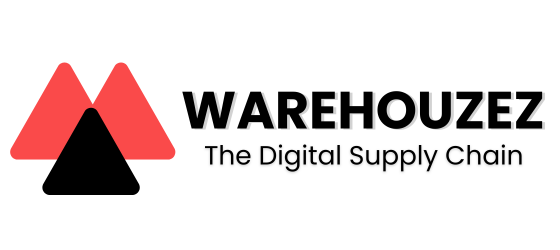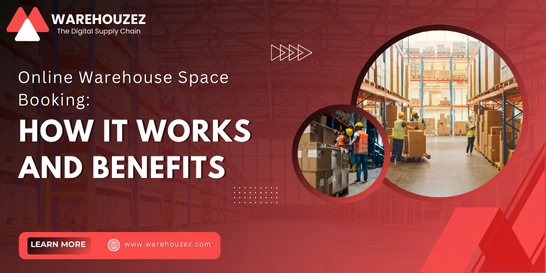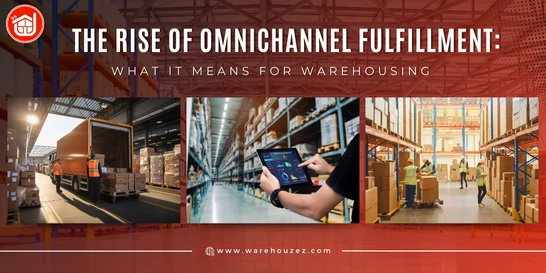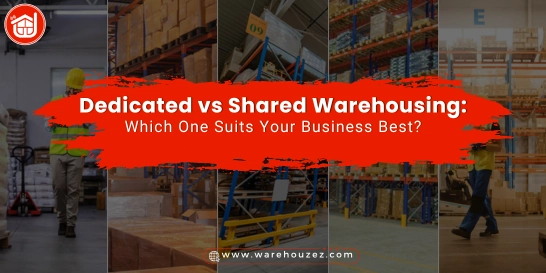On-Demand Warehousing vs. Traditional Warehousing: Which is Right for Your Business?
On-Demand Warehousing vs. Traditional Warehousing: Which is Right for Your Business?
Warehousing plays a prominent role in the supply chain management of businesses. It serves as the cornerstone for the storage, organization, and transportation of goods. As businesses seek efficient storage solutions to meet consumer demands and market dynamics, they face a critical decision: On-Demand Warehousing or Traditional Warehousing? On-demand warehousing offers cost-efficiency, flexibility, and scalability. On the other hand, traditional warehousing solutions provide permanence and stability. The choice between the two depends solely on specific business needs and storage requirements.
In this particular blog post, we will explore the pros and cons of each model, providing valuable insights to make the right decision. So, let's get started!
Introduction to On-Demand Warehousing
At its core, on-demand warehousing refers to a flexible solution that allows businesses to access storage space and related services on an as-needed basis. It works as a pay-as-you-go model without the constraints of heavy investments, long-term leases, or fixed commitments. It is an affordable solution for companies looking for short-term and reliable storage solutions. By working with a 3PL service provider, they can choose from a widespread network of warehouses in India. For example, flexible warehousing services in Noida provide businesses with the benefit of strategic location, allowing them to store their products near their customer base. It also helps with quick deliveries and reduced transportation costs. This warehouse flexibility model has gained significant popularity due to its ability to adapt to the ever-evolving needs of modern businesses. It offers countless benefits to businesses such as, agility, affordability, flexibility, scalability, and reduced operational risk. With this model, companies can manage fluctuations in inventory levels, seasonal demands, or sudden spikes in orders without having to maintain their own warehouse infrastructure.
Let's now take a look at the pros and cons of on-demand warehousing solutions to help businesses make well-informed decisions.
Advantages
Access to Specialized Services and Technologies
By leveraging this model, businesses can enjoy specialized services such as inventory management, storage, picking, packing, transportation, and order fulfillment. Additionally, they can also gain access to state-of-the-art technologies like inventory tracking apps and warehouse management systems, which may not be feasible for businesses to implement independently.
Cost Savings
By opting for on-demand warehousing, businesses only pay for the storage space or services they use. This allows them to save on costs associated with setting up warehouse infrastructure or operational costs associated with traditional model, such as maintenance, utilities, and staffing.
Flexibility and Scalability
On-demand warehousing offers businesses the flexibility to scale their storage space and services up or down based on fluctuating inventory levels, seasonal demands, or changes in business requirements, without being tied to long-term leases or commitments.
Disadvantages
Potential for Fluctuating Costs
While on-demand warehousing can be cost-effective in the short term, companies can face fluctuating costs over time, especially if they experience sudden increases in storage needs or if pricing structures change with the provider.
Limited Control Over Operations
Businesses relying on this model may have limited control over warehouse operations, including inventory management, order fulfillment processes, and quality control, as these responsibilities are often delegated to the 3PL warehouse provider.
Understanding Traditional Warehousing
Traditional warehousing refers to the conventional method of storing goods in warehouses owned or leased by businesses for long-term use. In this model, businesses have to pay fixed rental costs for specific warehouse space, often with extended contract durations. Traditional warehouses are well-designed to accommodate various storage needs and may include features such as racks, shelves, and pallets for organizing inventory. They are also well-equipped with the latest technologies and security systems. Businesses using traditional warehousing solutions have full control over warehouse operations, including receiving, inventory management, picking, packing, and order fulfillment. While traditional warehousing offers stability and predictability, it may lack the flexibility and scalability required to adapt to dynamic market conditions and evolving business needs compared to newer models like on-demand warehousing.
Let's now learn more about the pros and cons of this model that will ultimately help businesses make the right choice:
Advantages
Stability and Predictability
Traditional warehouses provide businesses with a stable and predictable environment for storing and managing their inventories, as they have long-term control over their warehouse space and operations.
Control Over Operations
With this traditional model, businesses have complete control over warehouse operations, from inventory management to order fulfillment. This allows for customization and optimization according to their specific needs and requirements.
Long-term Cost Considerations
While the traditional model can involve higher initial investments, businesses can benefit from lower long-term costs compared to on-demand warehousing, as they avoid ongoing rental expenses.
Disadvantages
High Initial Investment
Establishing a traditional warehouse requires significant investments in infrastructure, equipment, technology, and staffing, which can be difficult for small or medium-sized businesses with limited capital resources.
Fixed Space Constraints
This warehousing model often comes with fixed space constraints, limiting businesses' ability to quickly adapt to changes in inventory levels, seasonal demands, or unexpected fluctuations in market conditions.
Which is the Best Choice: On-Demand Warehousing or Traditional Warehousing?
Deciding whether on-demand warehousing or traditional warehousing is the best choice for your business depends on your specific needs and operational requirements. On-demand warehouse services offer cost-efficiency, flexibility, and scalability. All these benefits make it an attractive option for businesses experiencing fluctuating demand, seasonal variations, or seeking to minimize upfront investments. In contrast, traditional warehousing provides predictability, stability, and control over operations. These factors make it ideal for businesses with consistent demand patterns, complex inventory management needs, or those requiring specialized facilities. However, evaluating aspects such as business needs, inventory levels, growth projections, pricing will help businesses make well-informed decisions.
Things to consider when choosing between on-demand and traditional warehousing solutions:
Business Size and Scalability
Seasonal Fluctuations in Demand
Geographic Reach and Customer Base
Cost Considerations
Wrapping Up
To wrap things up, the decision between on-demand and traditional warehousing is certainly a critical one. It requires careful consideration of your business's needs, priorities, and operational requirements. While the on-demand model offers agility, cost-efficiency, flexibility, and scalability; traditional model provides stability, control over operations, and long-term cost considerations. By evaluating factors such as budget constraints, demand variability, growth projections, and the level of control desired over warehouse processes, businesses can make an informed decision that aligns with their strategic objectives and sets them up for success in their supply chain operations. Whether opting for the warehouse flexibility model or the reliability of traditional warehousing, businesses can leverage these solutions to optimize their supply chain operations and unlock growth in an increasingly competitive marketplace.



